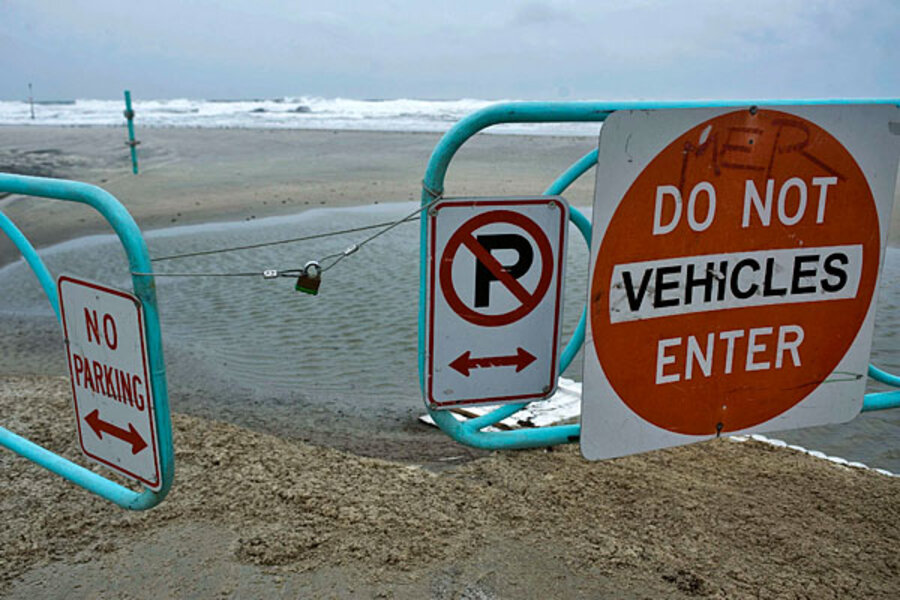Hurricane Sandy: how utilities are planning for power outages
Loading...
| Boston
With utility companies analyzing potential storm tracks for hurricane Sandy and deciding just how many utility crews to request to prepare for fallen power lines, Seth Guikema could be their best friend.
He is part of a pioneering attempt to help power companies allocate their men and equipment accurately by predicting how many people will be without power and where most outages will occur.
With forecasters predicting hurricane Sandy's landfall anywhere from Delaware to Massachusetts, his job is tough. But it is one part of the effort to improve upon power companies' widely criticized response to hurricane Irene last year, when hundreds of thousands of customers along the East Coast went without power for days. Some utilities are even talking about using drone aircraft to diagnose problem areas more quickly.
"We're seeing a lot better coordination this time between government and private utilities," says Mark Merritt, president of Witt Associates, a public safety and crisis management consulting firm in Washington. "There's a lot of effort going on right now to understand what the needs are and where." [Editor's note: The original version did not have the correct name for Witt Associates.]
Getting power back fast after an outage is a balancing act. Utilities managers who get it right have just enough men and trucks to do the job quickly, but not so many that they waste money. Get it wrong, and you feel the wrath of consumers.
Using a computer model, Dr. Guikema and his team at Johns Hopkins University in Baltimore are trying to help improve this decisionmaking process. Knowing how many people will lose power and where depends a lot on the quality of the data available. But Sandy is making that difficult.
"There's still a lot of uncertainty in the forecast tracks, so that makes it challenging in a case like this one," says Guikema, an assistant professor of geography and environmental engineering at Johns Hopkins' Whiting School of Engineering. "We take a track and then estimate the level of gusting winds and wind impact across the area and the damage it will cause – as well as the fraction of the people within each census track that will lose power."
The storm has grown daily with tropical-storm force winds extending 275 miles from the center, report researchers at the University of Miami. But that is expected to grow quickly with a "large wind field" impacting much of the East Coast.
Data from power companies can also help make forecasts more accurate, Guikema says. So far, one company has shared its data with his team.
"For our predictions to be useful there has to be enough lead time to call up the crews and materials," he says. "We aim to deliver data three to five days in advance. Right now, though, we're at the outer edge of the forecast, so there's still a lot of uncertainty."
For now, the team is running its model on the multiple tracks and refining that as the tracks converge. With hurricane Irene last August, the track was clear far sooner. The model suggested that utilities in the Maryland region were likely to need far more personnel than they initially planned – and it was proven correct. One utility, he says, announced before Irene arrived that it had a couple hundred crews to handle an expected 100,000 outages. But thousands of crews were eventually needed to handle about 630,000 outages.
Connecticut utilities, which also ran into problems after Irene, are reportedly among those calling up the 5,000 power company personnel requested for the Boston-Connecticut area. Other utilities, including those in Maryland and Washington, are ramping up personnel, too.
But drones? That's not a done deal, Mr. Merritt adds.
"There's a lot of sensitivity about drones," he says. "So it may not happen. But it would probably get the power back on faster."





